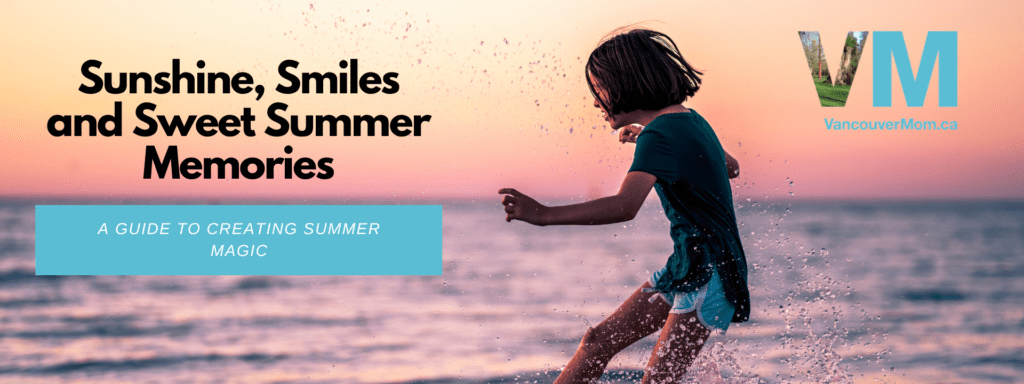It’s Not Easy Being Green at the Beach
 As spring approaches, we get excited for family time at the beach again. We have visions of children splashing through the ocean, building sandcastles, exploring beach creatures and collecting shells, rocks, and crabs. But what would your visions include if all the shells, crabs and other beach creatures had vanished? A few simple changes to your beach etiquette can help you preserve the beaches and the Friends of Semiahmoo Bay Society is an excellent resource to get you started.
As spring approaches, we get excited for family time at the beach again. We have visions of children splashing through the ocean, building sandcastles, exploring beach creatures and collecting shells, rocks, and crabs. But what would your visions include if all the shells, crabs and other beach creatures had vanished? A few simple changes to your beach etiquette can help you preserve the beaches and the Friends of Semiahmoo Bay Society is an excellent resource to get you started.
Beyond the organic
For many of us, protecting the environment is a priority for us. We teach our children how to be green by recycling, never littering and using organic products. But do you teach your children how to enjoy the outdoors without harming natural habitats on mountains, parks and beaches?
Thousands of visitors
Every year, thousands of children visit the beach during the summer, including busloads of students on field trips. Excited to learn, explore and examine everything on the beach, these children collect crabs, rocks and shells in their buckets. Unknowingly, as they delight over scurrying crabs and scavenge through rocks, they destroy natural habitats and kill thousands of crabs.
Only four beaches left
White Rock, Crescent, Centennial and Belcarra Beach are the only beaches left in the Lower Mainland that haven’t had their ecosystem entirely destroyed by either pollution or overuse. By educating our children, we can help ensure that doesn’t change. Turn yourself and your children into beach etiquette experts–grab your shovels and buckets and know that you’re helping to ensure that future generations can explore B.C.’s beaches the same way we do.
Teaching beach etiquette
Since learning about beach etiquette (see below) from the Friends of Semiahmoo Bay Society, my idea of a day at the beach with my family has dramatically changed. I’ve never been the type to pick up crabs or examine seaweed — I can hardly walk into the ocean with bare feet! But as a mom of a fearless little boy who loves to explore, I am now teaching him ways to play at the beach that are still fun and interesting, but protect what’s left of the fragile ecosystem. I still have visions of buckets and shovels, but just used in different ways.
Beach etiquette
Here are some great tips you can teach your children to help them preserve our precious beaches.
- Put water in your bucket. Crabs breathe water, and even with water in your bucket, a crab will only last for 20 minutes before it begins to suffocate and die.
- Don’t rock the rocks. Don’t tip the rocks, but lift them straight up and replace them gently, leaving them as you found them. Many beach creatures find cool, moist homes under rocks, logs and seaweed. If you move or take their home, they might not survive.
- Walk carefully. Avoid stepping on barnacles, mussels and other seashore animals.
- Leave cling-ons clinging. Seastars, limpets, mussels and other creatures survive waves and predators by clinging to rocks and wharf pilings. If picked off a rock or perch, cling-ons rarely survive.
- Take nothing off the beach. All things, living or dead, have a role to play.
- Don’t capture crabs bigger than a toonie. Crabs that are larger than the size of a toonie are not shore crabs and are prohibited by wildlife regulations to capture, unless they are of legal size and sex. Play it safe. Just look at them and keep them out of your buckets.
- Educate others. Share this article and talk about beach etiquette with others.
For more information
To learn more about the Friends of Semiahmoo Bay Society’s educational outreach program and how you can support it through time or donations, please visit their website. The educational outreach program provides walks, classes and online resources that educate children and adults on proper beach etiquette that protects the beach’s ecosystem.
Kristy Hill, of TwellMedia, is a freelance graphic designer and communications specialist who works out of her home office in Surrey B.C. with a happy, enthusiastic little boy by her side.



















Well said Kristy, thank you for drawing attention to the plight of our fellow creatures when we enjoy the beach. Living beaches are sensitve and we can enjy them best by exploring gently,birdwatching and reading etc. Hope families have a chance to come out and enjoy our free Beach Hero Interpreter walks this summer. See you at the beach! Warm regards, Marg
Thank you for this. We live in North Van and go to the beach quiet often (yesterday we were there with 5 kids) I never let my kids take live creatures and always make sure they put what ever they take back where they get it. Although I do like to take beach glass and tiles, I might think twice now. I will be sure to use some of your tips next time we go for a beach combing day. Plus I am going to link this blog to the one I posted yesterday just so others know too!
Amanda
http://monpetitshoo.blogspot.com/